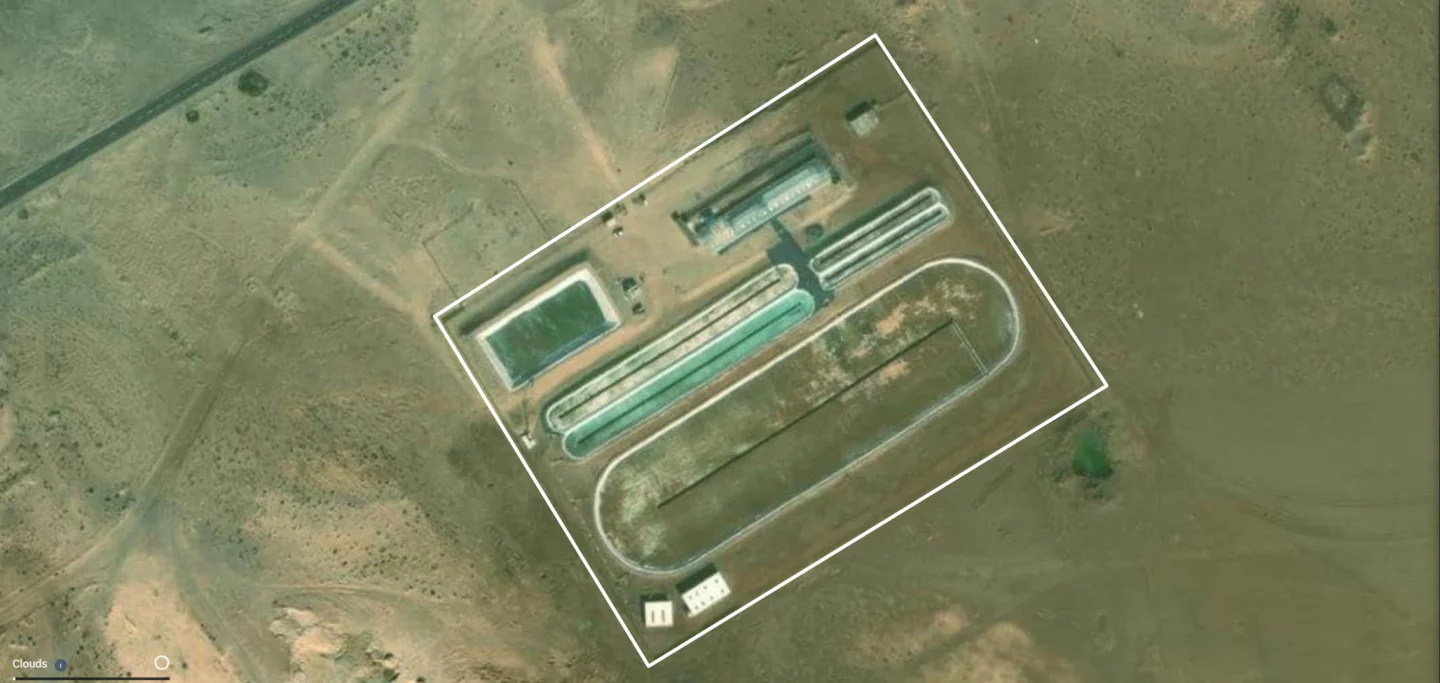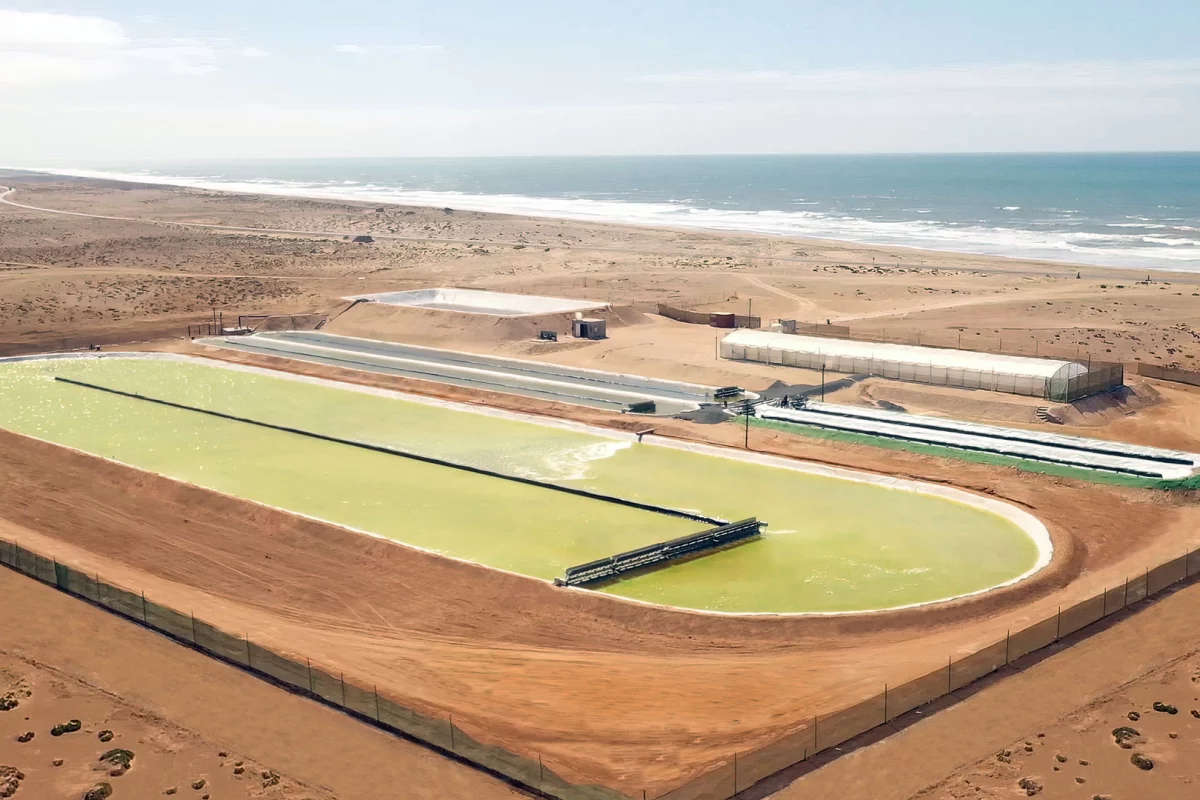As humanity fights to keep its only planet from becoming inhospitable, most of the focus will rightly be on decarbonizing everything we practically can. But it won't be enough. Direct air capture will need to be part of the equation, and it'll need to be massively scalable, energy efficient and much, much cheaper than today's technology, so it can become profitable quickly as carbon taxes and emissions trading schemes kick in globally.
London startup Brilliant Planet believes it has a carbon capture and sequestration model that ticks all the boxes, promising scalability up to billions of tons per year, near-negligible energy requirements, and costs around one tenth of current direct air capture. It relies on natural processes, uses low-cost coastal desert land, and has the side benefit of de-acidifying seawater as it goes, so the ocean itself can become a more effective carbon sink.
The idea is to corral and harness the carbon-gobbling power of algae, replicating and maintaining the conditions that cause algal blooms in large, low-density outdoor ponds full of seawater. As Brilliant Planet CEO Adam Taylor told Climate Tech VC, algae is an inherently more efficient biological machine for carbon capture than trees or plants, because its entire surface area is dedicated to photosynthesis, and it doesn't waste resources creating trunks, roots or branches. What's more, it grows and proliferates extremely fast under the right conditions.

The company's process works roughly like this: a location is chosen, on flat desert land near a coast, while a team of bio-prospectors starts filtering through samples of thousands of local strains of algae, selecting the ones that best fit the company's criteria. Thus, there are no introduced species, and the algae is already well adapted to the local climate and conditions.
Next, the company sets up a series of pumps, with which to bring seawater into a series of containers and ponds. The intakes are positioned some 2 to 3 km (1.4 to 1.9 miles) from the shore, to grab "upwelling" water – cold, nutrient-rich water from the bottom of the sea that's drawn up to the surface near coastlines by wind blowing over the surface. These seawater pumps account for most of the energy this system requires, and Brilliant Planet says they can easily be powered by on-site solar panels.
The water flows through a series of exponentially-growing enclosures. A single beaker of "inoculant" algae at the first step quickly multiplies under the right conditions, to fill four 12,000-square-meter (130,000-sq-ft) ponds. The company says it's able to create and maintain these optimal conditions, monitoring the setup using its own sensor technology, daily satellite imagery, public weather information and proprietary software based around simulating cellular-level biology and upwelling ocean currents. From there, it can keep the algae blooming using low-cost, abundant additives, and AI-enhanced oversight of the operation will work to improve yield.
Once mature, the algae is harvested out of the largest ponds using fine mesh filters. It's dried in the open desert air, and then this dried, salty, carbon-rich biomass is sent to a shallow desert grave, some 1 to 4 m (3 to 13 ft) under the surface, where it remains effectively sequestered for thousands of years in its arid new home. Meanwhile, the seawater is sent back to the ocean. It has been stripped of nutrients, but also of acidity.
"For every unit of water that passes through the system," Taylor told Climate Tech VC, "we de-acidify the equivalent of 5.1 units back to pre-industrial pH levels."
This is terrific for shelled organisms like corals, clams, mollusks and the like, and the low-carbon, high pH water that's returned to the ocean arrives primed to absorb more carbon from the atmosphere once it's out there, without becoming re-acidified.

Brilliant Planet has been able to find suitable local strains of algae everywhere it's looked thus far, and in terms of scalability, Taylor says the company's already identified a "short list" of about half a million square kilometers of suitably flat coastal desert land. That represents the potential for about two gigatons – two billion tons – of carbon capture and sequestration per year.
In other words, it could cancel out more than 5.5 percent of humanity's annual global CO2 emissions, offsetting about half the total emissions of today's road transport sector. It goes without saying, that would be an enormous contribution.
The company has tested its approach successfully in Oman, South Africa and over three years at its current 3-hectare (7.4-ac) facility in Morocco, says Talyor, and on the back of a recent US$12 million Series A funding round led by Union Square Ventures and Toyota Ventures, it's preparing for a 30-hectare (74-ac) demonstration setup, which it plans to build in 2023. From there, it'll build the first commercial-scale operation, at around 1,000 hectares (2,471 ac), which will begin removing some 40,000 tons of CO2 per year.
As far as price, Taylor is coy: "I anticipate a great position for us in the US$50-$100/ton high quality credit market." This would significantly undercut current operations like Switzerland's Climeworks, which, last we checked, was costing between US$600-$1,000 per ton in 2021 and shooting for closer to US$250/ton by 2025.
The only other solution we've seen claiming to target the US$50-$100 range at scale is Israel's High Hopes, using a fascinating high-altitude technique using stratospheric hydrogen balloons. Brilliant Planet will require a lot more land to operate at scale, but it won't be expensive land, its technique looks a lot less complicated than running fleets of thousands of high-altitude balloons, and the de-acidification side effects could give this algal approach some significant extra benefits from an environmental perspective.
Check out a video below, from UK Research and Innovation, a government funding body which has supported Brilliant Planet.
Source: Brilliant Planet via Climate Tech VC







